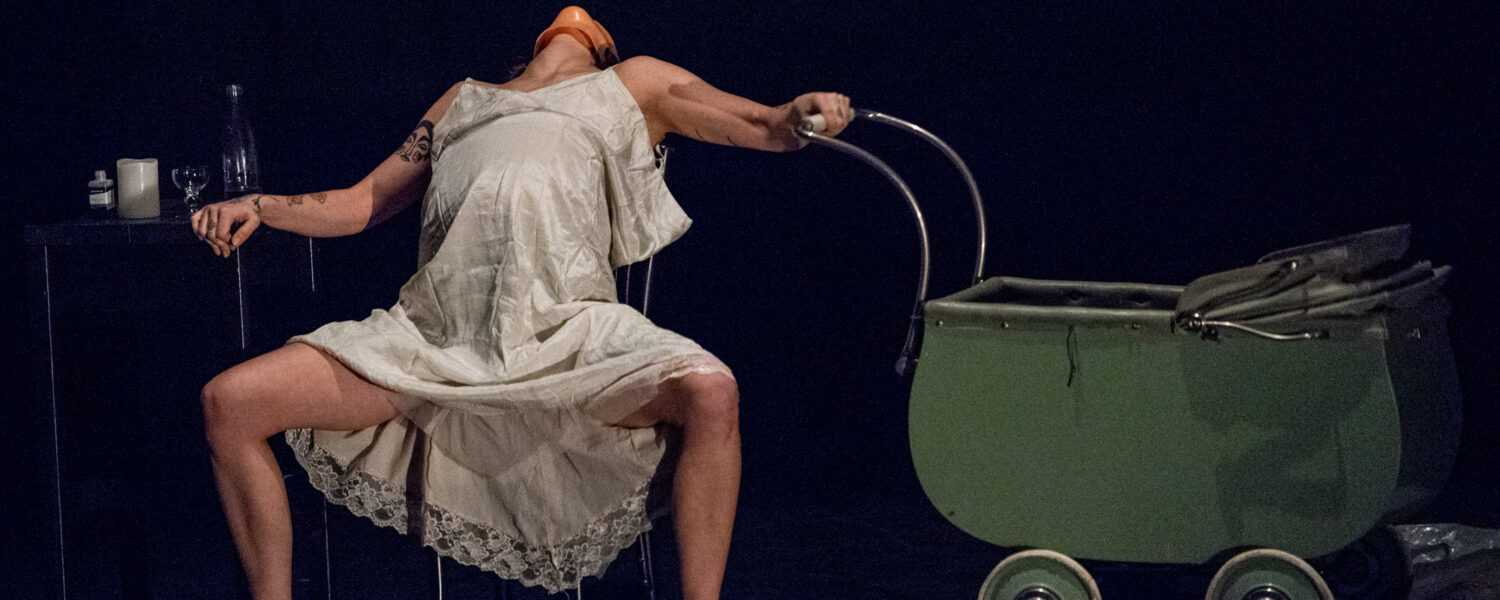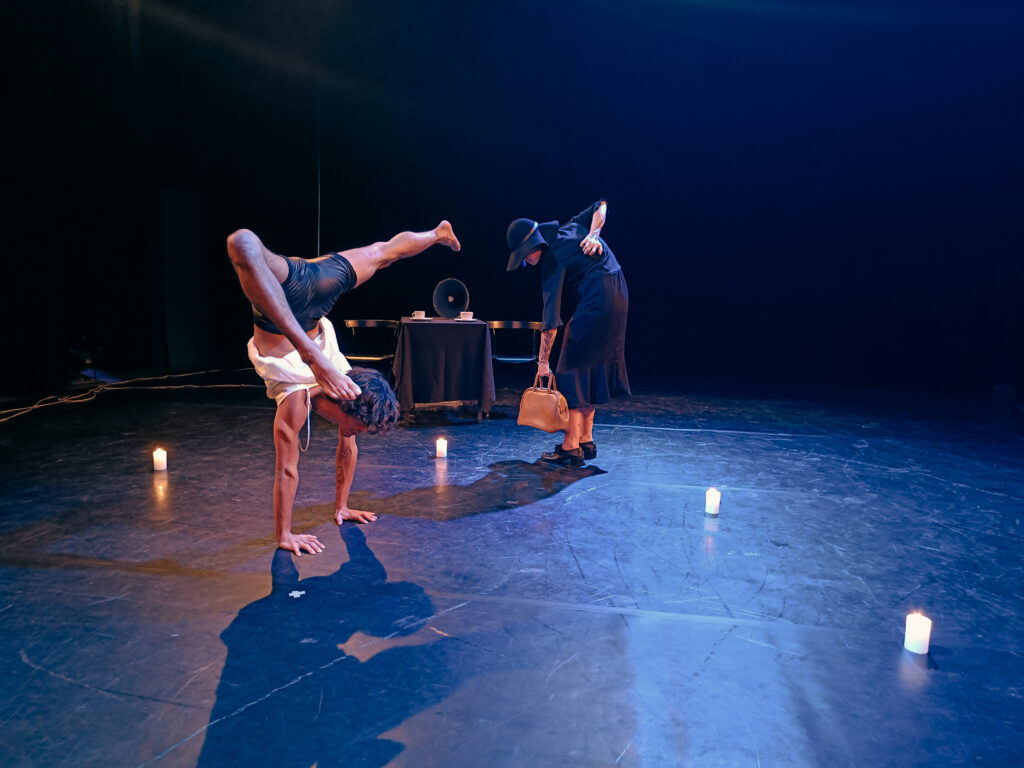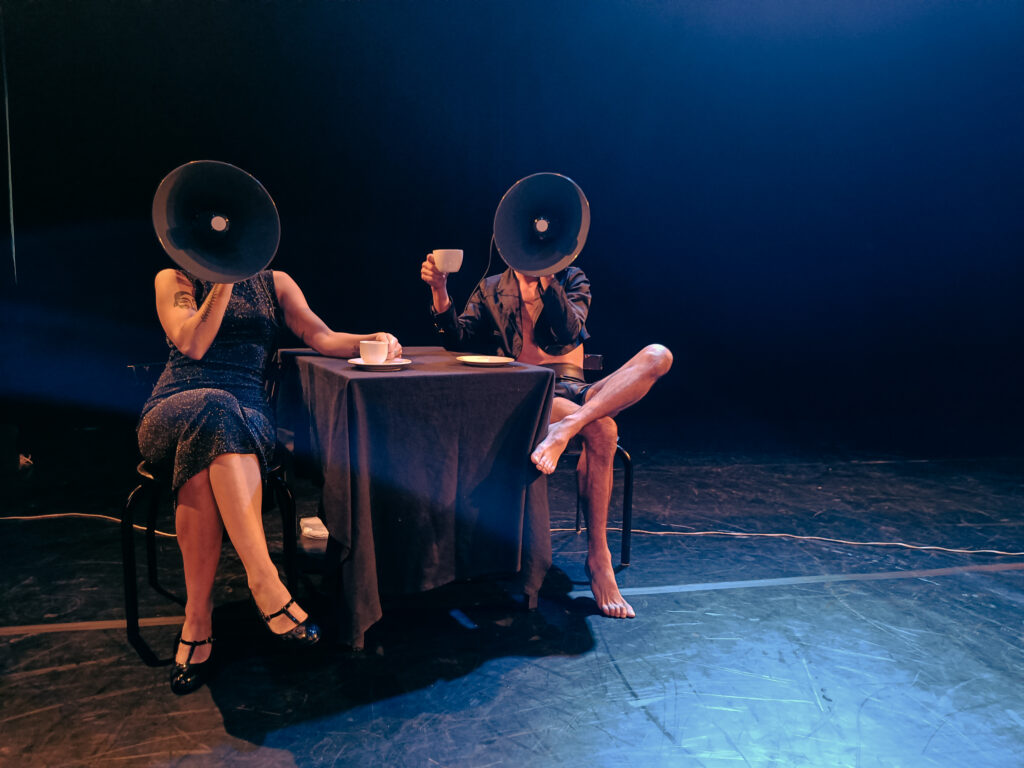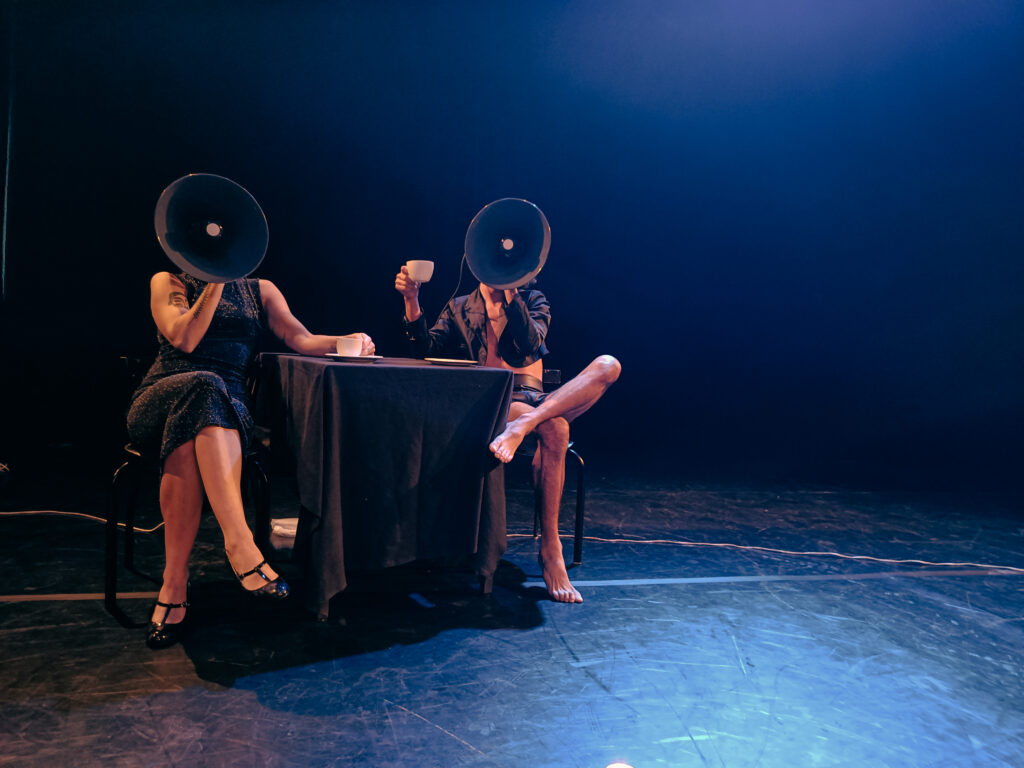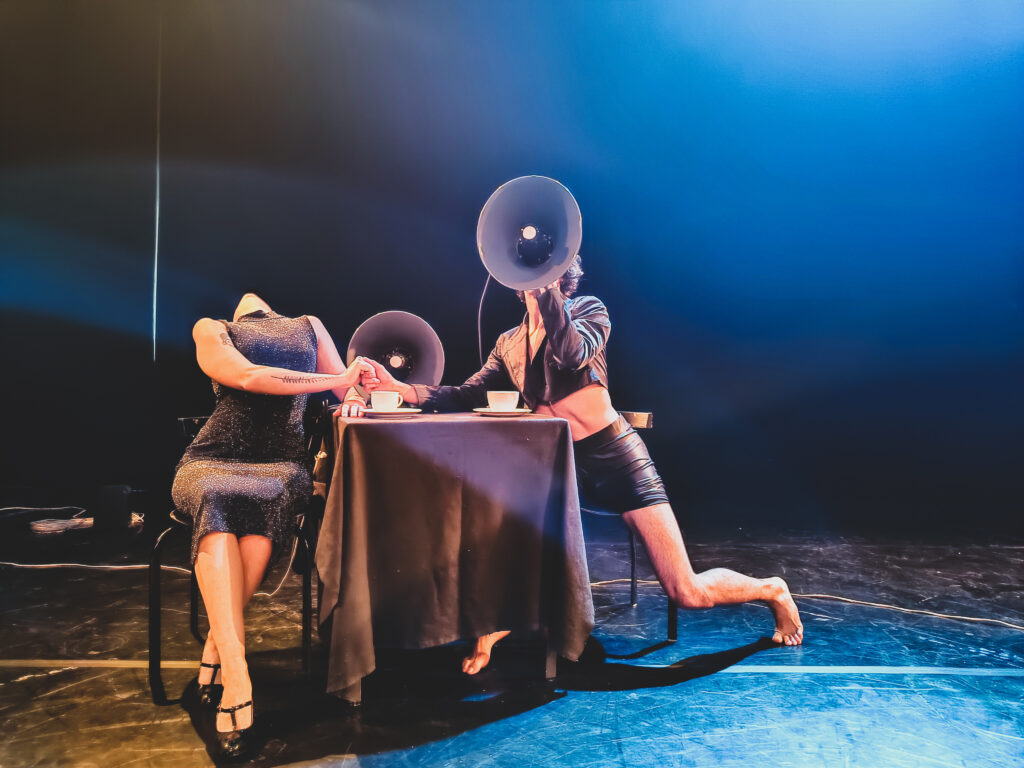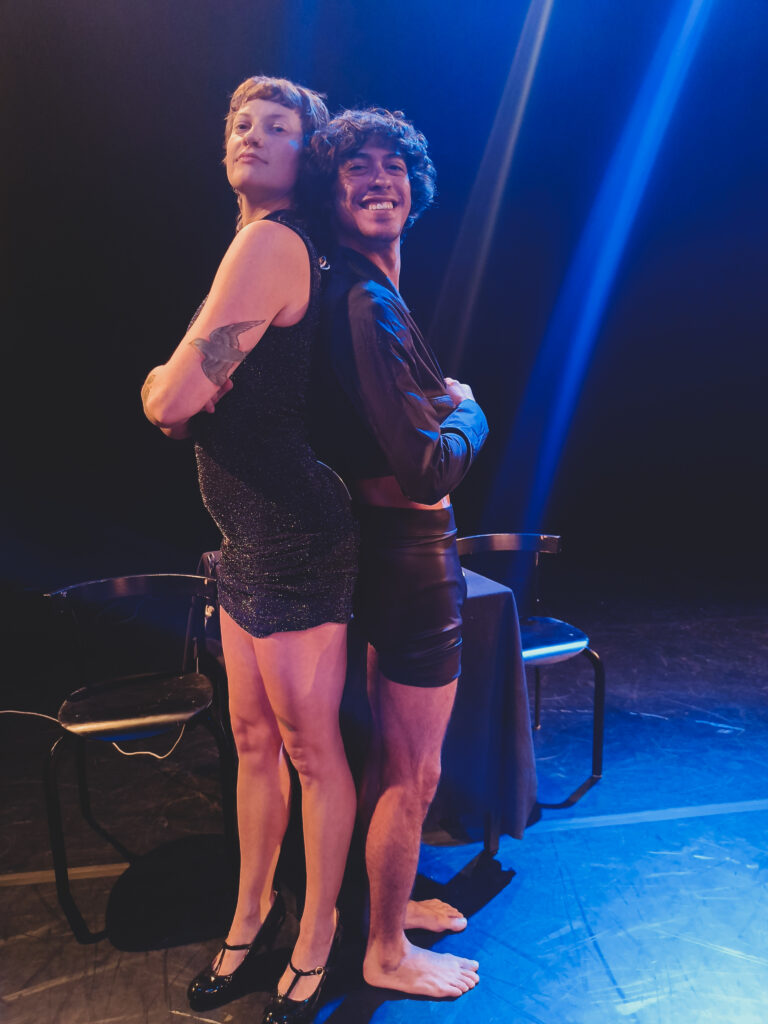Phobetor is a contemporary circus project that explores the interplay between contortion and sound in a transformation of space that directs the senses towards the uncertain.
In a dark and dreamlike universe, you are invited to open your eyes to the unknown, and reevaluate your view of the normal. Based on the French philosopher René Descarte’s statement: “I think, therefore I am” and to music by Lasse Munk, the two artists will explore a range of circus disciplines such as acrobatics, balance and contorsion and choreography in a distortion of sound and bodies.
Contortion is an old traditional circus discipline, a series of poses, balancing, acrobatic and choreographic movements based on agility. Flexibility can be expressed through back bend, split, handstands and dislocations.
The artists are inspired by traditional techniques, but have a modern approach to it in a play between femininity and masculinity at the intersection of their two bodies. They draw on influences from dance, theater, mask work and performance art in their artistic research.
Short interview with the artists
On how the project started and how they met
Q: You came in the residency with some material and you’re almost ready to like, premiere it?
Elise: Well, one can hope. We started this project the beginning of 2019. We made an open call and we went to Linköping and had a residency there as part of Nycirkus Öst. And then we came here for a residency for a couple of weeks in November 2019, and then we had a presentation at Feral Festival in 2020. So, the two of us had worked quite much on this universe, with these two characters who keep changing and morphing using control and flexibility. So, it’s using different costumes, getting in and outs and going through circus and life – violent and abusive, or romantic or just straight up strange relations, in this world, which is something like a dream…
Adalberto: … or a nightmare.
Elise: A parallel universe…
Adalberto: Surrealist!
Q: How did you two meet?
Adalberto: In a show in France. Also, we were in the same school for different years. We had a show with a French company, and that was where we met. We worked three years for them. And then we decided to do a show together.
On the universe they created in Phobetor and the characters that live there
Q: Can you tell me a bit more about these characters you’ve created in Phobetor? How did you start? Did you start with some characters in mind, or did they come to you in the process?
Elise: They’ve kind of come in the process of playing with the flexibility of the body and then seeing what kind of grotesque creatures and funny or disgusting things can come from this. And then working with the contrast to find how they relate to each other and what happens to them and how they transform.
It’s like, we work with a character, and all of a sudden it’s another character who comes and joins. Then you look at the video and see, ‘It could be an old lady – maybe she comes to join us instead of this handsome, wonderful man. That would be nice. Let’s try that.’
Maybe they could be twins, or maybe it could be more like an animal. Yeah. And it kind of like takes shape in this way.
Actually, when we had the residency here in 2019, we went to a flea market over here at the Storms Pakhus and we found all the costumes. All the costumes come from that flea market,
Adalberto: And that was also a way to have a new characters. So, it was in the progress that all the characters were born.
Elise: And what’s special now is that musician Lasse Munk has joined us, and it’s taking so much more shape and they playing like with the music, but also with this whole soundscape. Moving the sound around, using small speakers, placing them on the body.
On the role of music and sound design
Q: Has the work of Lasse pushed you in a new direction in the creation of the physical elements? Now that you have this perspective from sound design?
Adalberto: Sound design gave us something; it gave us a different colour or another form to look at it. It gave a little bit more life in some characters. The character of the Speaker Head is a new character that we create with him. And it’s about music, the character is just music.
Elise: I think it’s like also the fact that you play with the fact that the sounds are moving, to get this effect that makes it a little bit bizarre; that you are not just listening to music that comes from the speakers, but the speakers are actually moving, they are alive, also twisting the same way as the bodies…
On visual refrences and cinematic influences
Q: You said you found costumes in Storms Pakhus, which for us is such an immediate and accessible place, and then you describe this universe that is surrealist and out of this world. What can people in the ‘normal’ world get from this universe you create?
Adalberto: This project starts with normal life, then looks at a state of dreaming, having weird or bizarre dreams, or nightmares. The thing that you can see in this show is something that maybe you dream of or you did already.
Elise: I think it’s like it’s a lot of play with the unconscious, this parallel universe of being asleep or daydreaming. Or, I don’t know, your secret sexual imagination and all of these things to play with. And I think as a reference visually, I think it’s quite much in the world of David Lynch, but using circus, using flexibility and the trapeze.
